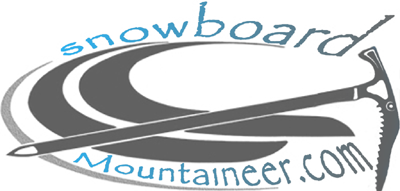Tech Tip: Backcountry Repair / Tool Kit
A break down of the Repair / Tool Kit. After blowing up a binding, try post-holing chest deep several miles back to your car in the dark and you will know what I mean. The following is a is an overview of a backcountry repair kit that you can work off of to tailor to your specific needs. For an overview of all items suggested to carry in the backcountry, see the backcountry safety list. Pretty self explanatory to keep everything together and not loose in the pack. An unexpected night out, an injury or having to leave a person in the cold while help is sought-out, are all scenarios that can happen. An emergency bivy will provide critical and possibly live-saving warmth. In extreme and harsh conditions, the bivy can be stuffed with extra layers of clothing or other appropriate supplies to provide necessary insulation. Additionally, the bright orange color of the bivy doubles as a visibility placard. Although a Gerber multi-tool weighs slightly more than other lightweight gizmos, I prefer the durability of the Gerber. Too many times I have seen gadgety tools such as binding buddies break and shear. While they seem like a good idea in practicality, in reality you want a high quality tool when you are out. The Gerber has a specialized ¼” socket adapter kit available that I can include various drivers with. A pole splint can be made from on old ski pole or aluminum tube by cutting the tube in halg length ways. Broken poles happen often from accidentally wedging between rocks or vacancies while touring. The pole splint can be affixed to the outside of the break and secured with duct tape. Some people also keep a pole splint with a couple of steel hose clamps. Personally, I find the duct tape to hold just as strong and I don’t have additional weight of clamps. It’s inevitable to eventually lose a basket. This can be more than an inconvenience if touring a long way in (i.e. a backcountry hut). I generally add a few wraps of electrical tape below the basket at the threads which will keep it from unthreading itself. But sometimes a lost basket happens, and without a basket a pole becomes useless. There are a million uses for ski straps, and too many to list here. I always carry an 18″ long one in addition to the rescue sled ski straps. Loosing a slider pin can make ‘unfun’ day. Especially true if use a system (i.e. soft boots) where you need it to tour and ride. If you get several miles back and discover a missing slider pin it can turn in to a long pothole event to get back to the trailhead. An unexpected night out can take a sudden turn for the worst without some sort of fire. I carry a chemical firestarter (shown), and a small piece of inner tube about 2″ square which will burn for about five minutes. I also carry two torch matches and a lighter. The reason for both ignition sources is the circumstance. More often than not an injury is on an extremity. Lighting a storm match with one hand or frozen hands is complicated to say the least. Having been in that scenario, I carry two ignition sources in case one fails. A small tea-light candle, also shown, can provide a lot of warmth believe it or not – especially in a snow cave. The wax can also be melted on to small tinder that is wet to help with ignition. One that note; the reason I carry a BCA snowsaw is because the sharp 30cm blade is an arborist blade and can make quick work of low hanging branches for fuel. I carry extra batteries for my avalanche beacon and headlamp. Even though a beacon check at the trailhead is almost always performed for battery power, there can be instances when additional batteries are needed. Especially if a beacon has to be switched to search mode. Duct tape is carried in the first aid kit, but I pictured it with the repair kit because it is versatile for both. A high thread-count quality duct tape comes in handing for many uses both medical and repairing gear. I don’t wrap mine on a trekking pole or water bottle because low temps and chaffing affect it’s adhesive capability. I wrap a mico-roll onto a small dowel, roughly 10 yds in length. This has many uses for repairs. Winding around a dowel or broom handle prevents kinks in it so that it does not break at that point. If a screw blows out on touring bindings or deck binding mounting, often the fastener hole is larger and stripped out. Packing steel wool in to the hole creates a shim to retighten. I keep a piece the size of a cotton ball. While five-minute epoxy is usually the solution for a blown out hole, it may not work at lower temperatures. The use of epoxy at lower temps exponentially makes the ‘5-minute cure time’ more like five weeks cure time.Repair Kit
Zipper bag
Emergency Bivy
Gerber multitool


Pole Splint

Pole Basket
Voile Strap (ski strap)
Spare slider pin

Firestarter
Batteries
Duct tape

Bailing Wire
Steel Wool




